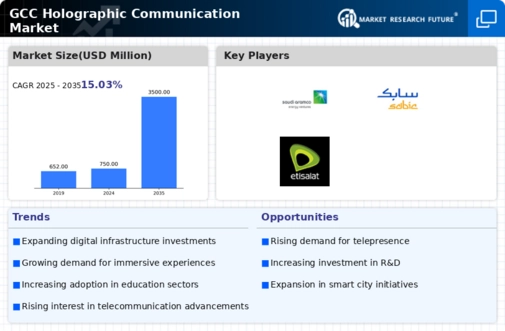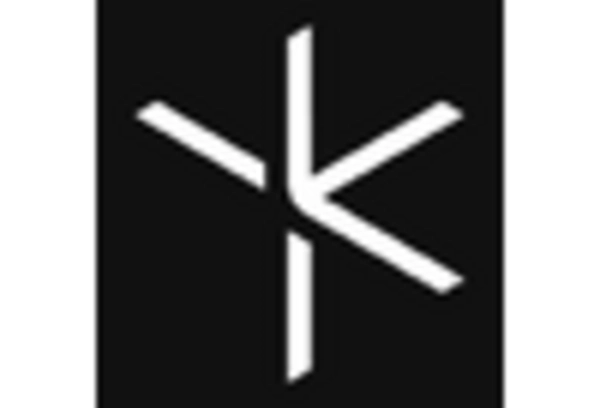Government Initiatives and Support
Government initiatives aimed at fostering technological innovation are significantly impacting the holographic communication market in the GCC. Various national strategies emphasize the importance of digital transformation and the adoption of cutting-edge technologies. For instance, initiatives to enhance smart city projects and digital infrastructure are likely to create a conducive environment for the growth of the holographic communication market. The allocation of funds and resources towards research and development in this sector suggests a commitment to advancing communication technologies. As governments recognize the potential of holographic solutions, the market is expected to experience accelerated growth, with investments potentially reaching millions of dollars in the coming years.
Integration with Emerging Technologies
The integration of holographic communication with emerging technologies such as artificial intelligence (AI) and augmented reality (AR) is a key driver for the market in the GCC. This convergence enhances the capabilities of holographic systems, enabling more interactive and engaging experiences. For example, AI can facilitate real-time language translation during holographic meetings, making communication more accessible. The holographic communication market is likely to benefit from this synergy, as businesses increasingly seek comprehensive solutions that combine multiple technologies. Market analysts predict that the adoption of such integrated systems could lead to a market growth rate of around 30% over the next few years, reflecting the increasing demand for sophisticated communication tools.
Rising Demand for Remote Communication Solutions
The increasing need for effective remote communication solutions is driving the holographic communication market in the GCC. As businesses and organizations seek to enhance collaboration among geographically dispersed teams, holographic communication offers a unique solution that transcends traditional video conferencing. This technology allows for immersive interactions, which can lead to improved productivity and engagement. According to recent estimates, the market is projected to grow at a CAGR of approximately 25% over the next five years, indicating a robust demand for innovative communication methods. The holographic communication market is thus positioned to capitalize on this trend, as companies invest in advanced technologies to facilitate seamless communication.
Increased Focus on Education and Training Solutions
The demand for innovative education and training solutions is driving the holographic communication market in the GCC. Educational institutions and corporate training programs are increasingly adopting holographic technologies to create interactive learning environments. This approach not only enhances the learning experience but also allows for remote participation, making education more accessible. The holographic communication market is likely to see a surge in applications within the education sector, as institutions recognize the benefits of immersive learning. Recent studies suggest that the market for educational holography could grow by approximately 20% annually, reflecting the increasing integration of technology in educational practices.
Growing Interest in Entertainment and Media Applications
The entertainment and media sectors are showing a growing interest in utilizing holographic communication technologies, which is positively influencing the market in the GCC. Holographic displays can create immersive experiences for audiences, whether in live events, concerts, or virtual reality environments. This trend is particularly relevant as the region hosts numerous entertainment events and festivals, providing a platform for showcasing holographic innovations. The holographic communication market is expected to see substantial investments from media companies looking to enhance viewer engagement. Projections indicate that the entertainment sector could account for a significant share of the market, potentially reaching a valuation of over $500 million by 2030.

















Leave a Comment